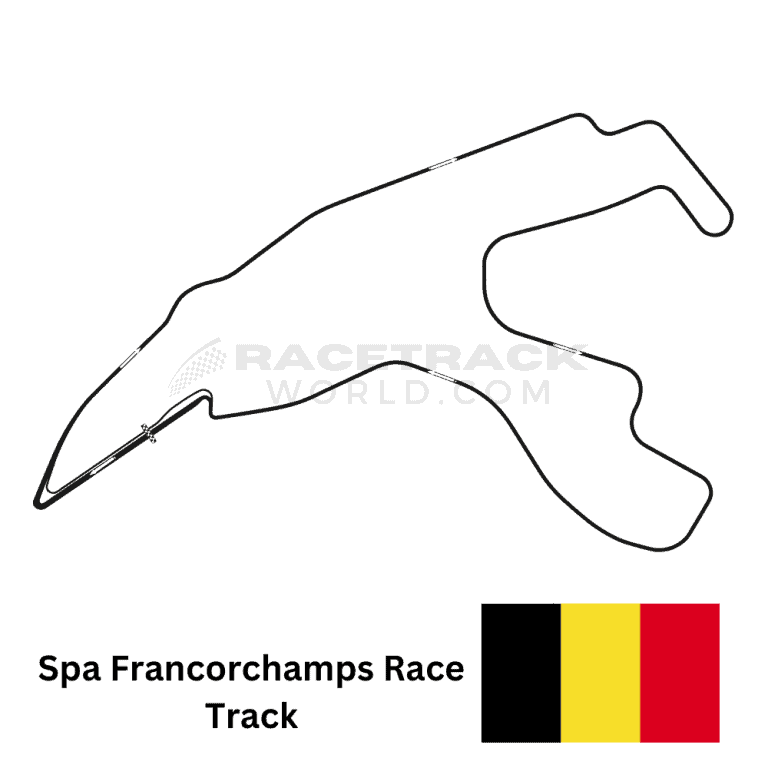Circuit de Spa-Francorchamps Info

Hotels near Circuit de Spa-Francorchamps
Circuit de Spa-Francorchamps History
Belgium, a country with an enduring passion for motorsports, boasts a rich history of racing that stretches back to the early 20th century. Among the most renowned racetracks in Belgium and across the globe, we find the illustrious Circuit de Spa-Francorchamps. Nestled within the enchanting Ardennes forest, in the Walloon region of Belgium, this circuit has established itself as a thrilling, high-speed haven for both drivers and motorsports enthusiasts.
Racing Through Time
The Circuit de Spa-Francorchamps has its roots firmly entrenched in the early 1920s when local visionaries embarked on an ambitious journey to create a world-class racing circuit in the quaint town of Spa. In 1921, the inaugural track was laid out, stretching an awe-inspiring 14.9 kilometers (9.3 miles). This track ingeniously blended public roads with newly constructed sections, creating a challenging, high-speed course.
The original circuit layout birthed iconic corners that have since become legends in the world of motorsports. Corners such as the notorious Eau Rouge and Raidillon complex, Les Combes, Blanchimont, and Stavelot quickly earned a reputation for their demanding nature and formidable speeds, firmly establishing Circuit de Spa-Francorchamps as one of the most prestigious and perilous racetracks on the planet.
Over the years, a series of alterations were made to enhance safety and optimize lap times. Notable among these changes were the addition of chicanes to manage speed and provide a more manageable driving experience. In 1979, a significant modification saw the track shortened to its current length of 7.004 kilometers (4.352 miles) in accordance with the stringent safety standards mandated by the FIA for hosting Formula One races.
A Racer's Playground
The contemporary layout of Circuit de Spa-Francorchamps is a harmonious blend of fast straights, sweeping corners, and tight chicanes that continually push the skills and bravery of even the most seasoned drivers. The track is famed for its high-speed corners, particularly the iconic Eau Rouge and Raidillon complex, a daunting uphill section demanding blind turns at breakneck speeds.
Additionally, the Circuit de Spa-Francorchamps features a medley of challenging corners, including La Source, Les Combes, Blanchimont, and Stavelot, all demanding a combination of sharp braking and rapid acceleration, providing a true examination of a driver's mettle.
An exceptional feature of this circuit is its dramatic elevation changes, as drivers navigate steep inclines and descents, further intensifying the thrill of racing. The Kemmel Straight, a lengthy stretch where cars can surpass 300 kilometers per hour (186 miles per hour) before vigorously braking for the Les Combes chicane, adds a pulse-quickening element to the experience.
Where to Stay Near Circuit de Spa-Francorchamps
Planning a visit to Circuit de Spa-Francorchamps for an adrenaline-packed motorsports event? Let's explore some excellent hotel options in close proximity to the circuit, ensuring a comfortable and convenient stay for you.
1. Hotel Francorchamps: Situated a stone's throw away from the circuit, Hotel Francorchamps offers cozy rooms with picturesque views of the Ardennes forest. Guests can unwind in the spa and enjoy sumptuous local cuisine in the hotel's restaurant.
2. Hotel de la Source: If you're seeking a place with a racing-themed atmosphere, Hotel de la Source is the perfect choice. Located within walking distance of the circuit, this hotel immerses guests in motorsports history and offers modern amenities for a relaxing stay.
3. Silva Hotel Spa-Balmoral: For those desiring a tranquil escape amidst nature, Silva Hotel Spa-Balmoral is a mere ten-minute drive from the circuit. Overlooking Lake Warfaaz, this hotel provides a serene retreat with a wellness center and gourmet dining.
4. Radisson Blu Palace Hotel, Spa: A short drive from Circuit de Spa-Francorchamps, the Radisson Blu Palace Hotel, Spa, presents an elegant option with luxurious rooms, an exquisite spa, and convenient access to the town's amenities.
Your visit to the Circuit de Spa-Francorchamps can now be even more enjoyable with these comfortable and conveniently located hotel options. After an exhilarating day at the track, you'll have the perfect place to relax and rejuvenate.
Iconic Corners and Thrilling Races
The Circuit de Spa-Francorchamps is not just renowned for hosting the Formula One Belgian Grand Prix but also for staging one of the world's most esteemed endurance races – the 24 Hours of Spa. This endurance race, exclusively for GT3 cars, occurs annually at the circuit, attracting the globe's top GT drivers.
The layout for the Spa 24h race differs slightly from the Formula One configuration. A notable addition is the chicane before the Blanchimont corner, designed to enhance safety for GT3 cars while preserving the heart-pounding challenge of the track.
The Spa 24h layout retains many iconic corners and chicanes, including La Source, Eau Rouge, Les Combes, and the Bus Stop chicane. It's a true test of both driver and machine endurance, with teams striving to complete as many laps as possible within the grueling 24-hour timeframe.
Embracing the Belgian Grand Prix
The Circuit de Spa-Francorchamps is a beloved destination for Formula One drivers and fans alike. The F1 race at Spa typically unfolds in late August or early September and is renowned for its unpredictable weather, often featuring rain as a compelling element influencing race outcomes.
The Formula One track at Spa mirrors the layout used for the Spa 24h race, with an added DRS (Drag Reduction System) zone on the Kemmel Straight, designed to facilitate overtaking. Its flowing, high-speed nature, combined with challenging corners, makes it a cherished destination for drivers who relish the opportunity to test their skills and push their cars to their limits.
The Circuit de Spa-Francorchamps is a revered gem within the world of motorsports, promising exhilarating races and unforgettable memories. Plan your visit to this legendary circuit and experience the thrill firsthand, while staying at one of the nearby hotels, to ensure your journey is both convenient and memorable.
